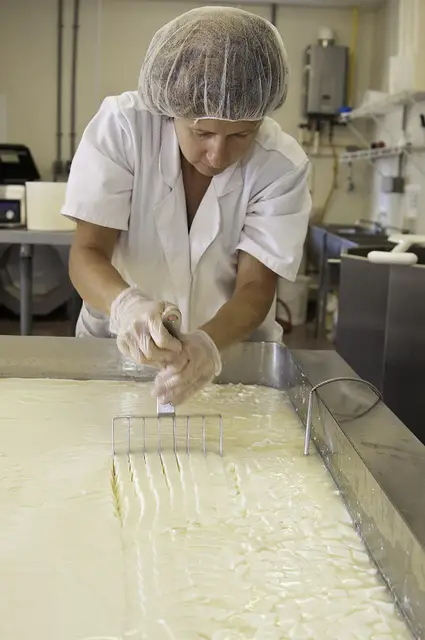Many of use are familiar with the classic cottage cheese look and texture. But, what exactly is cottage cheese? Cottage cheese is most often made from cow’s milk, which explains its white color. Similar to milk, it is manufactured with various milkfat percentages. The typical varieties are fat free or dry curd, 1% or lowfat, 2% or reduced fat, and 4% or regular. Let’s look at how cottage cheese is made to figure out how milk is transformed into a dairy cheese.

How It’s Made
An enzyme called rennet is added to heated milk, which creates a sort of Jell-O milk formation. What is happening here is that the rennet is turning the milk into curds. Next, the semi-solid milk formation is sliced with a knife north to south and east to west to encourage small curds to form. The cottage cheese is salted, gently heated, and drained of the whey (liquid). Once a sufficient amount of whey is drained, cream, half/half, or buttermilk is often added to give the curds a creamy taste. There are other methods to make cottage cheese, but generally this is how it is made.
What Is Cottage Cheese?
Based on the ingredients above, cottage cheese is simply milk, rennet, salt, and cream. However, it may also contain thickeners and preservatives when you buy it commercially. Examples of thickeners that might be on a cottage cheese label are guar gum, carob bean gum, and maltodextrin. Preservatives may include citric acid, phosphoric acid, and potassium sorbate. If you prefer to stay away from additives or preservatives there are brands like Daisy Regular Cottage Cheese that have minimal ingredients like cultured milk, cream, and salt.
Cottage cheese is made from pretty basic ingredients and is actually easy to make. We will feature an easy homemade cottage cheese recipe and video in the future so stay tuned. In the meantime, if you are curious why it is called “cottage cheese” click here.

